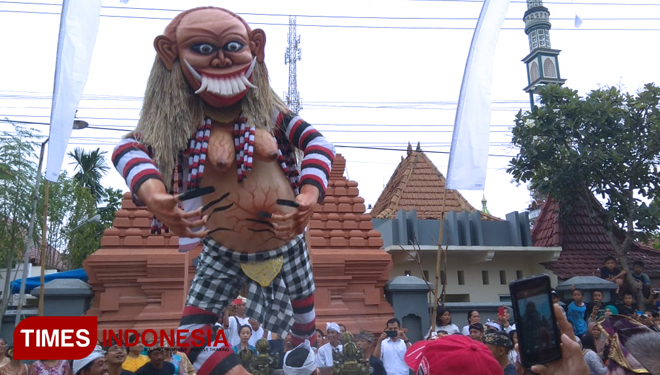Getting Closer Look to Ogoh-Ogoh of Silent Day Bali

TIMESINDONESIA, JAKARTA – Nyepi or Silent Day, the Balinese New Year will never be complete without ogoh-ogoh. Ogoh-ogoh is a huge statue with fierce and ugly look represents Bhuta Kala, a bad giant character in Javanese puppet show. This giant symbolize all bad things in human.
The words ogoh-ogoh came from the local language ogah-ogah which literally means being shaken. Its because the way the cary these things on their shoulder while being parade. More than ten people will be needed to carry one huge ogoh-ogoh alone.
Advertisement
The ogoh-ogoh was started to be introduced widely in Bali in 1983. This year was become the first year where Nyepi or Silent Day was named as one of national holiday. And to celebrate this event, the artists along with the local community built the giant statue.
As in progress, the ogoh-ogoh were not merely made in resemblance of Butha Kala. Some people will make some interesting look such as dragon, elephant, pig or event artist, public figure, politician, and event some corruptors and bad people.
Ogoh-ogoh was mainly made of timber, bamboo and paper which then sculptured and painted in such a way. In modern day the people will use styrofoam or just a foam to make it look smoother. Some will use some recycle things to reduce the waste.
To make one ogoh-ogoh it needs around 8 to 15 days or even a month. It depends on the size of the ogoh-ogoh and how many people doing the work. It costs some money to make ogoh-ogoh. It will cost around IDR 8 Million or more per se. the local community usually will donate some of money to make the most beautiful ogoh-ogoh for their village.
Before the pandemic, the local government even hold a competition for the most beautiful ogoh-ogoh in Bali. The winner will be carried around the city. as for the other ogoh-ogoh will be carried back to their village and do the parade.
The parade is what so called as Ngrupuk festival. The festival will be held a day before the Nyepi or Silent Day. After being paraded around the town, each of the ogoh-ogoh will be burnt to ashes in a cemetery or yard as a symbol of purification. (*)
**) Ikuti berita terbaru TIMES Indonesia di Google News klik link ini dan jangan lupa di follow.
| Editor | : Khodijah Siti |
| Publisher | : Sholihin Nur |

